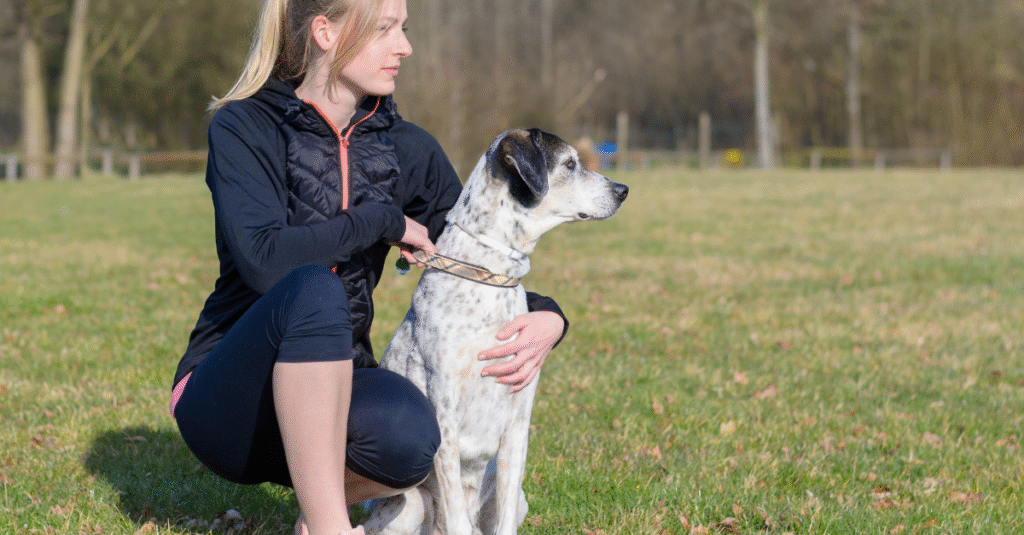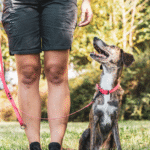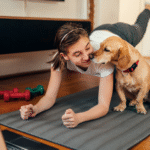G’day Dog Owners! Let’s Turn Your Scallywag Into a Good Bugger
Teaching your dog basic commands doesn’t need to be a mission – in fact, it should be fair dinkum fun for both of you! Whether you’ve got a cheeky puppy or an older dog who needs some manners, these proven techniques will have your furry mate responding in no time.
“After just two weeks of consistent training, my rescue Huntaway went from ignoring me to responding perfectly at our local beach,” says Hannah from Christchurch.
The 5 Essential Commands Every Kiwi Dog Should Know
1. “Sit” – The Foundation of Good Behaviour
How to teach it the Kiwi way:
-
Hold a treat (try bits of cooked sausage) near your dog’s nose
-
Slowly move it up and back over their head
-
As their bum hits the deck, say “Sit” in a clear voice
-
Immediately reward with the treat and an enthusiastic “Good dog!”
Top tip: Practice before dinner when your dog’s most hungry and motivated.
2. “Stay” – For Safety at BBQs and Beaches
Build up gradually, mate:
-
Have your dog sit
-
Show your palm like a stop sign and say “Stay”
-
Take one step back, then return and reward
-
Slowly increase distance and time
3. “Come” – The Lifesaver at the Park
Make coming to you the best part of their day:
-
Use extra special treats (little bits of cheese work a treat)
-
Never call them to tell them off – always make it positive
-
Start practicing in your backyard before trying at the dog park
4. “Drop It” – For When They Find Something Nasty
Essential for:
✖ Dead fish at the beach
✖ Your jandals
✖ That questionable thing they found in the bush
5. “Leave It” – For Safety Around Wildlife
Teach this potentially life-saving command:
-
Show a treat in your closed hand
-
Say “Leave it” and wait until they stop trying to get it
-
Reward with a different treat from your other hand
Kiwi-Approved Training Tips for Success
-
Keep sessions short – 5 minutes, a few times a day works best
-
Use high-value rewards – Cooked chicken beats boring biscuits any day
-
Train before meals – A hungry dog is more likely to work for treats
-
Be consistent – Everyone in the whānau should use the same commands
-
Make it fun! – If you’re not enjoying it, your dog won’t either
Troubleshooting Common Training Problems
“My dog only listens when I have food”
➔ Gradually replace some treats with praise and pats
➔ Sometimes reward with a game of fetch instead
“He knows commands at home but ignores me at the park”
➔ Practice in increasingly busy places
➔ Use extra special treats in distracting environments
“Training feels too hard”
➔ Focus on one command at a time
➔ Celebrate small wins – they all add up
The Secret Kiwi Trainers Know: Capturing Good Behaviour
Beyond formal training sessions, reward your dog when they:
☑ Sit calmly instead of jumping up
☑ Lie down during family kai time
☑ Check in with you on walks without being asked
This “passive training” reinforces good manners all day long.
When to Get Extra Help
While most dogs do well with consistent training, you might need professional help if your dog:
✓ Shows aggression (growling, snapping)
✓ Has severe anxiety issues
✓ Doesn’t respond to any rewards
✓ Makes you feel unsafe
Take Your Training Further with Doggy Dan’s Canine Reactivity Webinar
For Kiwi dog owners dealing with:
• Pulling on the lead
• Jumping on visitors
• Barking at other dogs
• Difficulty focusing outside
This automatic webinar teaches you:
✅ How to get your dog’s attention instantly
✅ Gentle ways to correct unwanted behaviours
✅ Techniques that work in real Kiwi environments
✅ Solutions tailored to our unique challenges
“Living rurally, I didn’t have access to trainers. Doggy Dan’s webinar changed everything for me and my heading dog!” – Tom, Northland
Click Here to Transform Your Dog’s Behaviour Today
Your 4-Week Training Plan
Week 1: Focus on “Sit” and name recognition
Week 2: Add “Stay” and “Come”
Week 3: Teach “Drop It” and begin “Leave It”
Week 4: Practice all commands in different locations
Remember – there’s no strict timeline. Go at your dog’s pace!
Final Thoughts: You’ve Got This, Bro!
Training your dog is one of the most rewarding things you’ll do together. It:
• Creates an unbreakable bond
• Keeps them safe in our beautiful outdoors
• Makes them welcome everywhere you go
And when you hit a rough patch (we all do), remember help is available through resources like Doggy Dan’s webinar.
What’s the first thing you’ll teach your dog? Share your training goals below! 🐕💙


